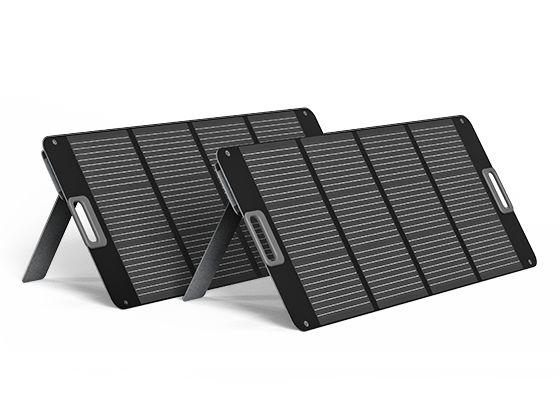
Table of Contents
Imagine waking up in a cabin surrounded by nature, completely off the grid and powered by the sun. With solar panels, you can make this dream a reality, creating a self-sufficient home that doesn’t rely on traditional utilities. Living off the grid means freedom—freedom from high utility bills, from noisy neighborhoods, and from the hustle and bustle of everyday life. It’s all about embracing a simpler, more sustainable lifestyle while enjoying the peace and quiet of nature. Ready to build your solar-powered retreat? Let’s dive in!
What Does an "Off-Grid Cabin" Mean?
An off-grid cabin is a self-sufficient property or cottage without traditional amenities like electricity, water, or sewage services. With the advancement of renewable energy sources such as wind turbines and solar panels, reliance on public power will decrease. You can gather rainwater or access natural resources to quench your thirst. One's need for modern amenities does not have to be compromised when living off-grid. Renting an off-grid cabin allows you to live a sustainable life while reconnecting to nature.
Benefits of Living Off-Grid
Seeking freedom paired with the need to bond with nature will provide several benefits when living off the grid.
1. Freedom
When you manage your resources and produce electricity, you effectively cut ties with your public utilities. This gives you more control over your lifestyle and protection from price hikes and outages.
2. Effects on the Environment
Living off the grid encourages sustainability. By using renewable energy, conserving resources, or avoiding excess waste, you can protect natural ecosystems and significantly reduce your carbon footprint.
3. Peace and Simplicity
Off-the-grid living offers unparalleled tranquillity, isolation, privacy, and a semblance of self-governance. Whether it involves a weekend retreat or a permanent change, this lifestyle can significantly enhance your well-being.

Building an Off-Grid Cabin: A Guide
While constructing off-the-grid cabins requires meticulous planning, the satisfaction is immense. Here's a step-by-step guide to get you started:
1. Selecting the Land and Setting
Finding the ideal site is the first step. Search for land endowed with natural resources such as water and sunlight. Check local policies to confirm you can live off the grid in your chosen region.
2. Design Your Cabin
Sketch a realistic floor plan of the cabin considering the narrative features, furnishings, and additional rooms. Do not forget storage space, plan for energy-saving features such as proper insulation and optimal positioning of windows to capture the most sunlight.
3. Build the Structure
Assemble the walls, roof, and foundation. Use sturdy materials like metal roofing for longevity and rainwater collection. Finish the outer side of the building to help it withstand the prevailing weather in the area.
Source Your Water A water source can be rainfall, a well, or a local stream. You can make the water potable by installing a filtration system.
4. Install Waste Systems
An off-grid facility commonly uses a composting toilet. To treat shower and sink wastewater, join them with greywater systems.
5. Get Ready for Cooling and Heating
Regarding the change of seasons, consider a wood-burning stove for heating in colder regions. In addition, the location of your cabin should incorporate features which allow for passive solar heating along with natural ventilation.

How Can an Off-Grid Cabin Be Powered?
Living off the grid means your cabin needs to be powered sustainably, which is one of many secrets of cabin life. The most accessible and popular forms of renewable energy include the following:
Solar Energy
The main reliable and easily accessible source is harnessing solar energy. Solar panels with sufficient energy batteries should be installed to ensure a day-night supply. These systems allow for an easy and affordable approach by merging portable solar panels with power stations.
Wind-Powered
A small wind turbine can supplement your solar power setup if you have consistent wind, especially during the winter.
Micro-Power Hydration
If located near running water, micro-hydro generators provide good power for cottages. However, these systems are more expensive and complicated to implement.
What kind of power generation method should we choose?
Solar energy is the best option. It is clean, renewable, and cost-effective. Unlike fossil fuels, it doesn’t pollute the air. Solar panels use sunlight, which is abundant and free. This energy source reduces dependency on non-renewable resources.
Advantages of Solar Energy Compared to Other Power Generation Methods
-
Solar power is sustainable.
-
It doesn’t release harmful gases into the environment.
-
It is also low-maintenance once installed.
-
Other power sources, like coal or gas, contribute to climate change and are expensive to operate.
-
Solar energy can be used anywhere, even in remote areas.

How to Install a Solar Power Generation System for the Cabin
Portable power generators like the Ampace 100W solar panel for small scale setup, while larger schemes could use the Ampace 200W solar panels . Here is a complete guide for Solar Power Generation Installation for the Cabin.
-
First, choose the right location for the solar panels. It should get plenty of sunlight.
-
Next, calculate your energy needs to determine the size of the system.
-
Install the panels on a roof or ground mount.
-
Connect the panels to an inverter to convert DC power to AC.
-
Finally, wire the system to a battery storage unit for energy storage.
-
Ensure the system is properly grounded and follows local regulations.
Essentials for Off-Grid Living
These are some of the essentials, beyond the power and water, for comfortable and off-the-grid living:
Food Preservation and Storage: Preserving food long-term often requires an investment in canning, dehydrating, or fermenting.
Important Equipment and Lighting: LED bulbs, candles, and even solar-powered lanterns are great for lighting at night. Always keep a flashlight or headlamp handy.
Communication and Navigation: Use a CB radio or satellite phone to remain in contact. Carry maps, a GPS unit, and a compass for navigation.
Self-Sustainability: Gardening, fishing, hunting, and foraging are excellent skills to nurture for food supply assurance. These are supplemented with DIY and basic maintenance skills.
Medical Supplies and First Aid: Invest in a first aid box with bandages, antiseptics, pain relievers, and personal prescriptions. Understanding first aid and developing basic survival medicine skills are crucial.
Backup Plans for Comfort while Living Off the Grid
When living off the grid, no matter how well your systems function, unexpected failures or downtime are inevitable. A solid backup plan ensures you’re never left in the dark, providing comfort and continuity.

Instead of relying on a small gas generator, the Andes 1500 power station stands out as an ideal backup solution for your primary systems. Whether it’s routine maintenance or prolonged stretches of cloudy weather limiting solar output, the Andes 1500 delivers reliable power to keep your off-grid life running smoothly.
Benefits of Off Grid Electricity
The freedom that comes from generating off-grid electricity is commendable. Utility costs are eliminated, and a person's carbon footprint is significantly reduced, alongside invaluable energy management skills. Additionally, the feeling that comes from knowing you are fueling your off-grid life with clean, renewable energy is immensely satisfying.
Conclusion
Enjoying time in an off-grid cabin makes it easy to be self-sufficient, go green, and appreciate nature in all its glory. The construction of your cabin and its powering by renewable energy systems make the lifestyle intentional and simple.
Thanks to technological advances like Ampace solar generator kits, powering your off-grid cabin with solar energy is easier than ever. You can achieve self-sufficiency and independence with the right tools. Are you ready to escape the chaos and create your peaceful paradise? Kickstart your off-grid adventure with Ampace.







